CES 2025 was held last week in Las Vegas. We at Semiconductor Intelligence attended for our tenth CES. The event had over 140,000 attendees and over 4,500 exhibitors.
U.S. Consumer Electronics Market
Brian Comiskey of the Consumer Technology Association (CTA) presented on technology trends in 2025. The key theme was advances in AI and connectivity will lead to major changes in enterprise operations, consumer electronics, energy, mobility, smart homes and media. Comiskey presented CTA’s forecast for the U.S. consumer electronics market.
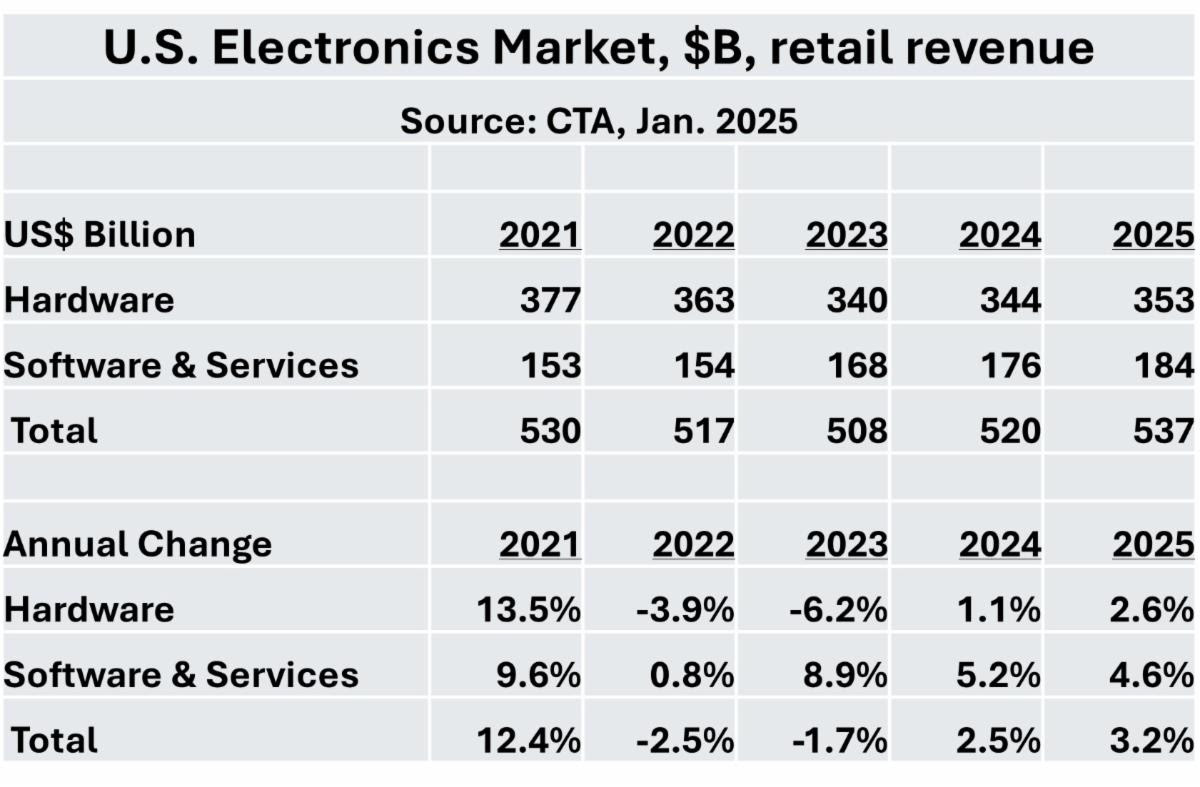
After strong growth in 2021 due to recovery from the pandemic, the overall U.S. electronics market fell in 2022 and 2023. The market turned positive in 2024, with 2.5% growth. The expectation is for stronger growth in 2025 at 3.2%.
However, there is much uncertainty about the outlook in 2025. U.S. President-elect Donald Trump has proposed new tariffs on imports to the U.S. Two proposals are:
• A 60% tariff on imports from China and a 10% tariff on other imports.
• A 100% tariff on imports from China and a 20% tariff on other imports.
The CTA conducted a study on the potential impact on the U.S. electronics market if these tariffs are enacted. Using the lower-tariff scenario, the price increases to consumer and the change in consumption due to the higher prices are:

Under the higher-tariff scenario, CTA estimates consumption of laptops & tablets would drop 68% and consumption of smartphones would drop 54%. Thus, the CTA forecast of 2.6% growth in the U.S. electronics hardware market in 2025 could instead be a major double-digit decline.
CES 2025 Themes
AI was the overriding theme of CES 2025. The kickoff keynote was by Jansen Huang, CEO of Nvidia, the dominant AI chip provider. Huang said AI will enable major advancements in technology. Every engineer, programmer and content creator will need an AI assistant to do their job effectively. AI has allowed advances in real-time image rendering which will have a major impact on video games, movies and television. AI will analyze physical world data to train robots. Huang predicted robots will become the largest technology industry in the not-too-distant future.

Nvidia’s Jensen Huang with AI enabled robots
Delta Airlines’ keynote was held in the Las Vegas Sphere, a 18,600-seat venue with the world’s largest video screen at 160,000 square feet. Delta Airlines CEO Ed Bastian spoke about using AI to analyze customer feedback and make air travel more personalized. Delta will partner with Joby to provide electric vertical take-off and landing (VTOL) aircraft to transport passengers from city centers to airports. Delta is also partnering with Uber to connect transportation to the airport with airline reservations.
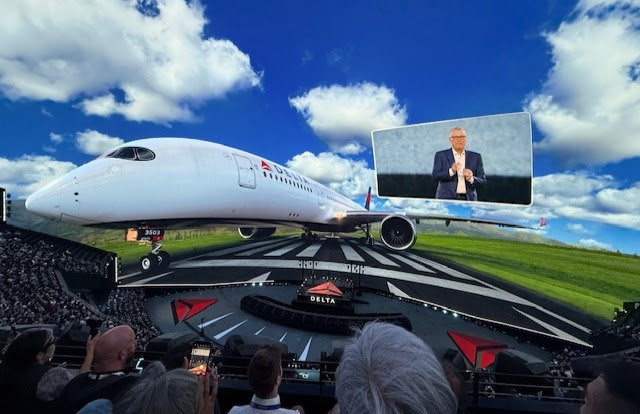
Delta’s Ed Bastian in the Las Vegas Sphere
Samsung’s press conference emphasized home AI through its SmartThings system. Samsung has over 340 partners working on Smart Things applications. The goal is to use SmartThings to integrate and control TVs, appliances, smartphones, connected devices, lighting, heating and air conditioning. Samsung is working with Hyundai on automotive AI for electric vehicles. In a departure from the past, Samsung did not use the press conference to introduce any new TVs, smartphones, or appliances.
Among the other major consumer electronics companies, LG Electronics’ booth had a similar theme to Samsung – the AI home. Sony’s booth focused on a few areas including gaming, cameras and video entertainment.
Vehicle Technology
The West Hall of the Las Vegas convention center (LVCC) was devoted to Vehicle Technology and Advance Mobility. TIER IV exhibited an autonomous bus which is currently in operation in Japan. May Mobility showed an autonomous vehicle (AV) built using a Toyota vehicle. May will introduce AVs in partnership with Lyft in Atlanta later in 2025. Oshkosh displayed electric trucks including a fire truck, garbage truck and a delivery vehicle for the U.S. Postal Service. John Deere featured autonomous equipment for farming and construction. Chinese company Zeekr drew a crowd with its EVs featuring its Golden Battery which charges from 10% to 80% in 10.5 minutes. Waymo exhibited its AVs in partnership with Zeekr and Hyundai.
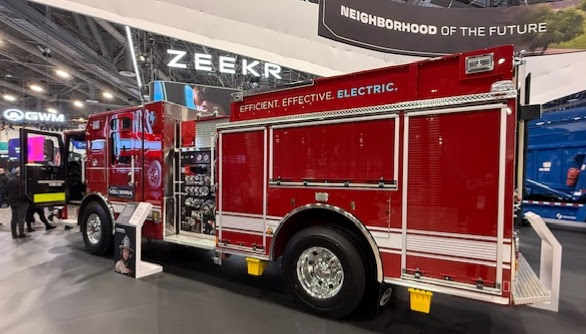
Oskosh electric fire truck
Interestingly, most of the major automakers did not have exhibits. Honda displayed its EV concept models, the Honda 0 Saloon and SUV. BMW showcased its Panoramic iDrive display which will be in all BMW models by the end of 2025. None of the other major automakers had displays at CES.
Robots
Robots were prominent at CES 2025. Robots on display performed tasks such as making coffee, serving food, greeting and providing information. Open Droids is introducing a series of robots to perform more complex household tasks such as unloading dishwashers, doing laundry, and cleaning. Numerous types of electric personal transportation were on display, including electric bikes, scooters, and even an electric surfboard.
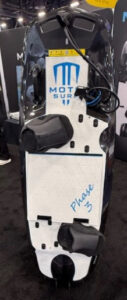
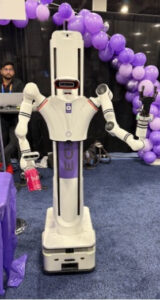
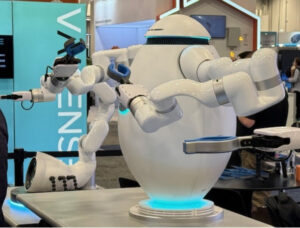
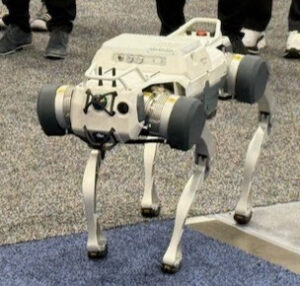
CES 2025 continued the shift from consumer electronics being driven by traditional products such as TVs, smartphones and appliance to AI-enabled new products such as robots, electric vehicles and autonomous transportation. As a result, we are seeing much of the innovation being driven by start-up companies rather than large consumer electronics companies.
Semiconductor Intelligence is a consulting firm providing market analysis, market insights and company analysis for anyone involved in the semiconductor industry – manufacturers, designers, foundries, suppliers, users or investors. Please contact me if you would like further information.
Bill Jewell
Semiconductor Intelligence, LLC
billjewell@sc-iq.com
Also Read:
2025 Outlook with Matt Burns of Samtec
Semiconductor Industry Update Webinar – Registration Now Open
WEBINAR: 2025 Semiconductor Year in Preview
Share this post via:
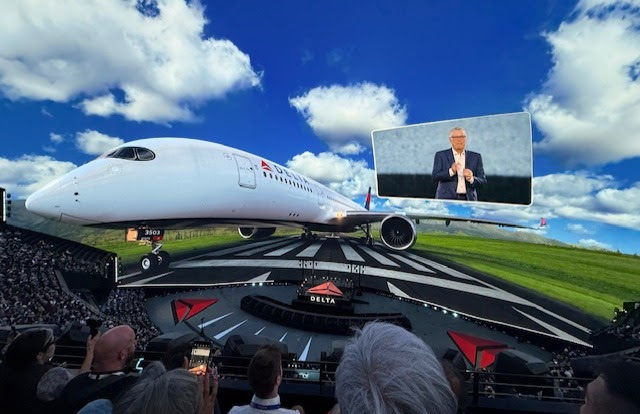





I Have Seen the Future with ChipAgents Autonomous Root Cause Analysis